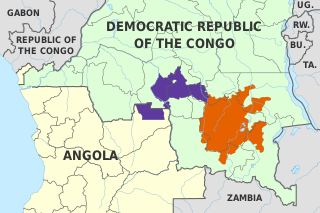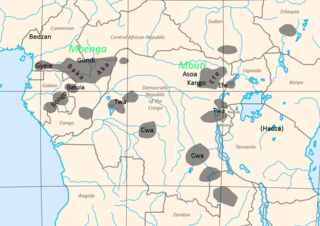Notes
- ↑ Nurse & Phillipson 2003
Narrow Bantu languages (Zones A–S) (by Guthrie classification) | |||||||||||||||||||||||||||||||||||||||||||||||||||||||||||||||||||||||||||||||||||||||||||||||||||||||||||||||||||||||||||||||||||||||||||||||||||||||||||||||||||||||||||||||||||||||||||||||||||||||||||||||||||||||||||||||||||||||||||||
|---|---|---|---|---|---|---|---|---|---|---|---|---|---|---|---|---|---|---|---|---|---|---|---|---|---|---|---|---|---|---|---|---|---|---|---|---|---|---|---|---|---|---|---|---|---|---|---|---|---|---|---|---|---|---|---|---|---|---|---|---|---|---|---|---|---|---|---|---|---|---|---|---|---|---|---|---|---|---|---|---|---|---|---|---|---|---|---|---|---|---|---|---|---|---|---|---|---|---|---|---|---|---|---|---|---|---|---|---|---|---|---|---|---|---|---|---|---|---|---|---|---|---|---|---|---|---|---|---|---|---|---|---|---|---|---|---|---|---|---|---|---|---|---|---|---|---|---|---|---|---|---|---|---|---|---|---|---|---|---|---|---|---|---|---|---|---|---|---|---|---|---|---|---|---|---|---|---|---|---|---|---|---|---|---|---|---|---|---|---|---|---|---|---|---|---|---|---|---|---|---|---|---|---|---|---|---|---|---|---|---|---|---|---|---|---|---|---|---|---|---|---|---|---|---|---|---|---|---|---|---|---|---|---|---|---|---|---|
| |||||||||||||||||||||||||||||||||||||||||||||||||||||||||||||||||||||||||||||||||||||||||||||||||||||||||||||||||||||||||||||||||||||||||||||||||||||||||||||||||||||||||||||||||||||||||||||||||||||||||||||||||||||||||||||||||||||||||||||
| | This Bantu language-related article is a stub. You can help Wikipedia by expanding it. |
| Luban | |
|---|---|
| Luba–Songye | |
| Geographic distribution | S DR-Congo, C Zambia |
| Linguistic classification | Niger–Congo? |
| Glottolog | luba1253 |
The Luban languages are a group of Bantu languages spoken by the Luba people in the south of DRC Congo, established by Christine Ahmed (1995). They constitute half of Guthrie's Zone L. The languages, or clusters, along with their Guthrie identifications, are:
The remaining L20 (Songe) languages, Lwalu, Luna, and Budya, presumably belong here. [1]

Luba-Kasai, also known as Cilubà or Tshilubà, Luba-Lulua, is a Bantu language of Central Africa and a national language of the Democratic Republic of the Congo, alongside Lingala, Swahili, and Kikongo ya leta.

The Lukuga River is a tributary of the Lualaba River in the Democratic Republic of the Congo (DRC) that drains Lake Tanganyika. It is unusual in that its flow varies not just seasonally but also due to longer term climate fluctuations.

The 250 or so "Narrow Bantu languages" are conventionally divided up into geographic zones first proposed by Malcolm Guthrie (1967–1971). These were assigned letters A–S and divided into decades ; individual languages were assigned unit numbers, and dialects further subdivided. This coding system has become the standard for identifying Bantu languages; it was a practical way to distinguish many ambiguously named languages before the introduction of ISO 639-3 coding, and it continues to be widely used. Only Guthrie's Zone S is (sometimes) considered to be a genealogical group. Since Guthrie's time a Zone J has been set up as another possible genealogical group bordering the Great Lakes.

Luba-Katanga, also known as Luba-Shaba and Kiluba, is a Bantu language of Central Africa. It is spoken mostly in the south-east area of the Democratic Republic of the Congo by the Luba people.
Songe, also known as Songye, Kisonge, Lusonge, Yembe, and Northeast Luba, is a Bantu language spoken by the Songye people in the Democratic Republic of the Congo.

The term Congo Pygmies refers to "forest people" who have, or recently had, a hunter-gatherer economy and a simple, non-hierarchical societal structure based on bands, are of short stature, have a deep cultural and religious affinity with the Congo forest and live in a generally subservient relationship with agricultural "patrons", with which they trade forest products such as meat and honey for agricultural and iron products.
Sanga, or Luba-Sanga, is a Bantu language of the Democratic Republic of Congo. It is closely related to Luba-Katanga.
Hemba (Emba), also known as Eastern Luba, is a Bantu language of the Democratic Republic of the Congo. It is spoken by the Hemba people. Yazi may be a dialect.
Bangubangu is a Bantu dialect cluster spoken by the Bangubangu people of the Democratic Republic of the Congo.
Lwalu, also known as Lwalwa, is a Bantu language of the Democratic Republic of the Congo. Its classification is uncertain: Nurse (2003), following Ahmed (1995), assigns all of Guthrie's L.20 languages to Luban, including Lwalu.
Nkoya is a Bantu language of Zambia. It may be one of the Luba languages, and is at least Luban.
Ilunga Sungu was a ruler (Mulopwe) of the Kingdom of Luba in what is now the Katanga Province of the Democratic Republic of the Congo, said to have reigned from about 1780 to his death.
The Hemba people are a Bantu ethnic group in the Democratic Republic of the Congo (DRC).
Kabambare is a territory in Maniema province of the Democratic Republic of the Congo. It comprises six collectivities: Babuyu, Bahemba (Kibangula), Bahombo (Kabambare), Lulindi, Saramabila, and Wamaza. The majority of the residents are speakers of Bangubangu. Buyu, and Hemba.
Binji is a Bantu language of eastern Democratic Republic of the Congo. Maho (2009) states that it is close to Songe, which is otherwise isolated within the Luban languages established by Ahmed (1995).
Luna is a Bantu language of eastern Democratic Republic of the Congo. Assigned by Guthrie to a group called Songe (L.20), it is presumably one of the Luban languages established by Ahmed (1995), like most of the other Songe languages, though it was not specifically addressed. Ruhlen (1987) agrees in placing it with the Luban languages.
Kebwe (Mikebwe) is a Bantu language of the Democratic Republic of the Congo. It was related to Hemba by Ahmed (1995).
Zela is a minor Bantu language of the Democratic Republic of Congo. It is closely related to Luba-Katanga.

Achille Emile Meeussen, also spelled Achiel Emiel Meeussen, or simply A.E. Meeussen (1912–1978) was a distinguished Belgian specialist in Bantu languages, particularly those of the Belgian Congo, Rwanda and Burundi. Together with the British scholar Malcolm Guthrie (1903–1972) he is regarded as one of the two leading experts in Bantu languages in the second half of the 20th century.